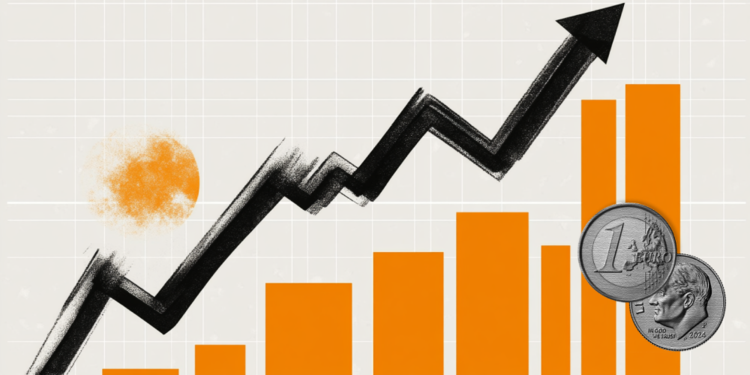- EUR/USD drifts higher to near 1.1335 in Thursday’s early Asian session.
- Businesses dealing with the early stages of Trump’s tariffs are seeking to pass increasing costs onto consumers, said the Fed Beige Book.
- ECB’s Muller said rates may have to fall below neutral on trade.
The EUR/USD pair edges higher to around 1.1335 during the early Asian session on Thursday. Mitigating concerns over potential tariff threats by US President Donald Trump exerts some selling pressure on the US Dollar (USD).
According to a Federal Reserve’s (Fed) Beige Book report on Wednesday, businesses dealing with the early stages of Trump’s tariffs are looking for ways to pass increasing costs onto consumers. Companies reported receiving alerts from suppliers about increased prices, and they looked to find ways not to absorb the increases while noting uncertainty over the ability to pass them along to customers.
At the beginning of the month, Trump imposed a baseline import tax of 10% or more on dozens of nations, but then unexpectedly paused the taxes for 90 days to let countries negotiate lower rates. However, the uncertainty surrounding trade policy and concerns over the economic slowdown in the US could drag the Greenback lower and create a tailwind for EUR/USD.
Across the pond, the European Central Bank (ECB) cut its main interest rate by a quarter of a percentage point to 2.25% at its April meeting last week. During the press conference, ECB President Christine Lagarde said that US tariffs on EU goods, which had increased from an average of 3% to 13%, were already harming the outlook for the European economy.
Meanwhile, the ECB Governing Council member Madis Muller said on Wednesday that the central bank may have to lower interest rates to levels that stimulate the economy if trade uncertainty proves more damaging for growth. The dovish remarks from the ECB policymakers might weigh on the shared currency in the near term.
Euro FAQs
The Euro is the currency for the 19 European Union countries that belong to the Eurozone. It is the second most heavily traded currency in the world behind the US Dollar. In 2022, it accounted for 31% of all foreign exchange transactions, with an average daily turnover of over $2.2 trillion a day.
EUR/USD is the most heavily traded currency pair in the world, accounting for an estimated 30% off all transactions, followed by EUR/JPY (4%), EUR/GBP (3%) and EUR/AUD (2%).
The European Central Bank (ECB) in Frankfurt, Germany, is the reserve bank for the Eurozone. The ECB sets interest rates and manages monetary policy.
The ECB’s primary mandate is to maintain price stability, which means either controlling inflation or stimulating growth. Its primary tool is the raising or lowering of interest rates. Relatively high interest rates – or the expectation of higher rates – will usually benefit the Euro and vice versa.
The ECB Governing Council makes monetary policy decisions at meetings held eight times a year. Decisions are made by heads of the Eurozone national banks and six permanent members, including the President of the ECB, Christine Lagarde.
Eurozone inflation data, measured by the Harmonized Index of Consumer Prices (HICP), is an important econometric for the Euro. If inflation rises more than expected, especially if above the ECB’s 2% target, it obliges the ECB to raise interest rates to bring it back under control.
Relatively high interest rates compared to its counterparts will usually benefit the Euro, as it makes the region more attractive as a place for global investors to park their money.
Data releases gauge the health of the economy and can impact on the Euro. Indicators such as GDP, Manufacturing and Services PMIs, employment, and consumer sentiment surveys can all influence the direction of the single currency.
A strong economy is good for the Euro. Not only does it attract more foreign investment but it may encourage the ECB to put up interest rates, which will directly strengthen the Euro. Otherwise, if economic data is weak, the Euro is likely to fall.
Economic data for the four largest economies in the euro area (Germany, France, Italy and Spain) are especially significant, as they account for 75% of the Eurozone’s economy.
Another significant data release for the Euro is the Trade Balance. This indicator measures the difference between what a country earns from its exports and what it spends on imports over a given period.
If a country produces highly sought after exports then its currency will gain in value purely from the extra demand created from foreign buyers seeking to purchase these goods. Therefore, a positive net Trade Balance strengthens a currency and vice versa for a negative balance.

